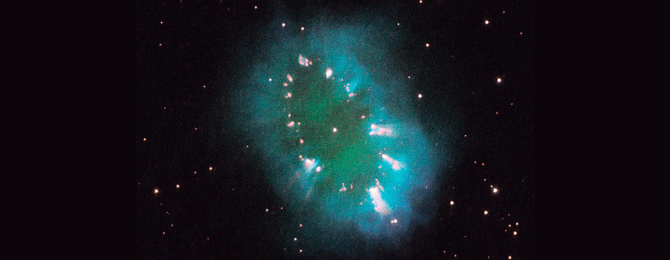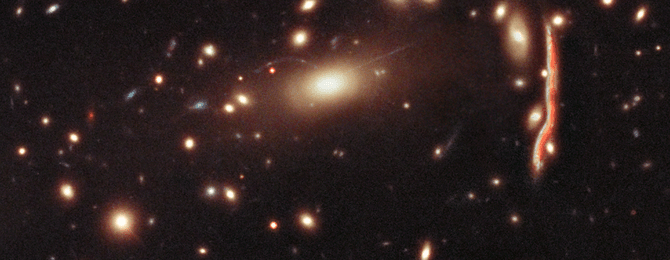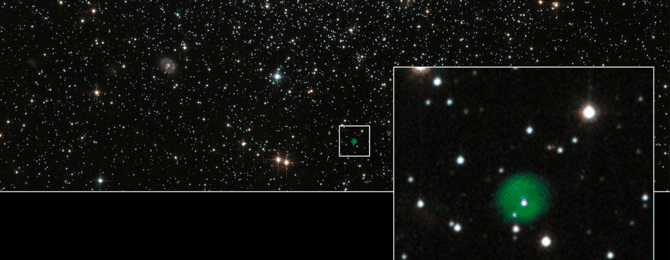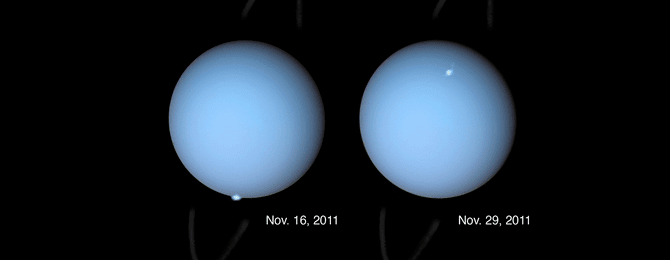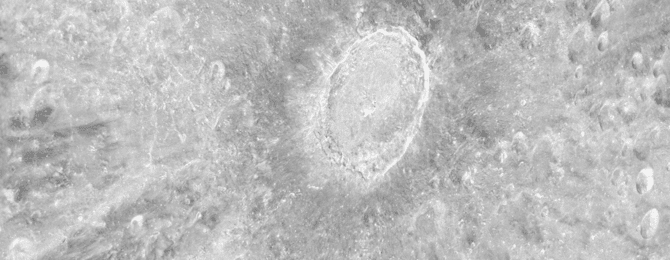Gravitational Lens Creates Cartoon of Space Invader
The universe is eerie enough without giving us an apparition of a 1980s video game alien attacker. This oddball-looking object is really a mirage created by the gravitational field of a foreground cluster of galaxies warping space and distorting the background images of more distant galaxies.
This effect, called gravitational lensing, can make multiple mirror image copies of the light coming from a far-flung galaxy. It is a powerful tool for seeing remote galaxies that otherwise would not be observable by Hubble because they are too dim and far away. In this Hubble photo a background spiral galaxy is warped into an image that resembles a cartoon of a simulated space invader. The foreground massive cluster, called Abell 68, lies 2 billion light-years away. The brightened and stretched lensed images come from galaxies far behind it.
(More at HubbleSite.com)




